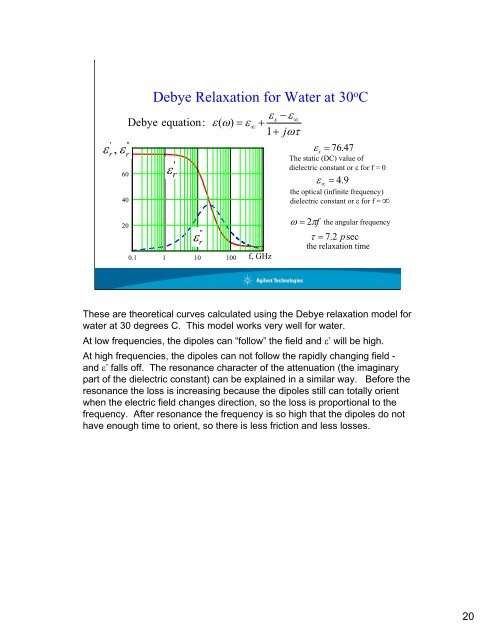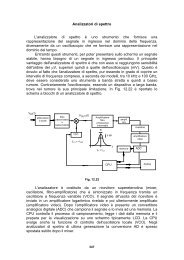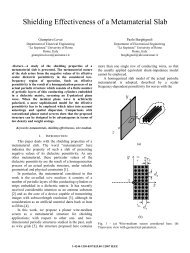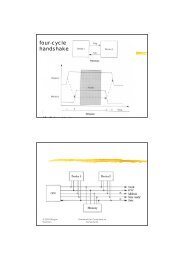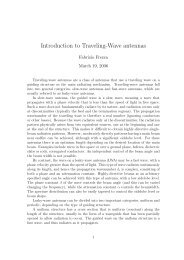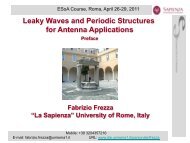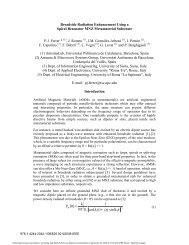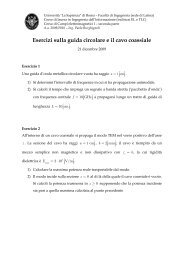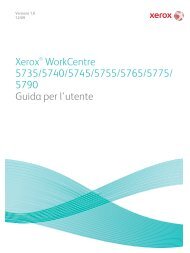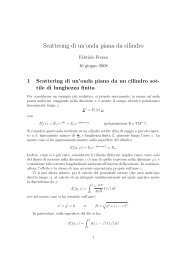Materials Measurement Phil Bartley Shelley Begley
Materials Measurement Phil Bartley Shelley Begley
Materials Measurement Phil Bartley Shelley Begley
- No tags were found...
Create successful ePaper yourself
Turn your PDF publications into a flip-book with our unique Google optimized e-Paper software.
ε rε' '',r6040Debye Relaxation for Water at 30 o CDebye equation:'ε rε ( ω)εs−εε∞+1+jωτ=∞ε sThe static (DC) value ofdielectric constant or ε for f = 0ε ∞= 76.47= 4.9the optical (infinite frequency)dielectric constant or ε for f =∞20"ε r0.1 1 10 100f, GHzω = 2πfthe angular frequencyτ = 7.2psecthe relaxation timeThese are theoretical curves calculated using the Debye relaxation model forwater at 30 degrees C. This model works very well for water.At low frequencies, the dipoles can “follow” the field and ε’ will be high.At high frequencies, the dipoles can not follow the rapidly changing field -and ε’ falls off. The resonance character of the attenuation (the imaginarypart of the dielectric constant) can be explained in a similar way. Before theresonance the loss is increasing because the dipoles still can totally orientwhen the electric field changes direction, so the loss is proportional to thefrequency. After resonance the frequency is so high that the dipoles do nothave enough time to orient, so there is less friction and less losses.20


